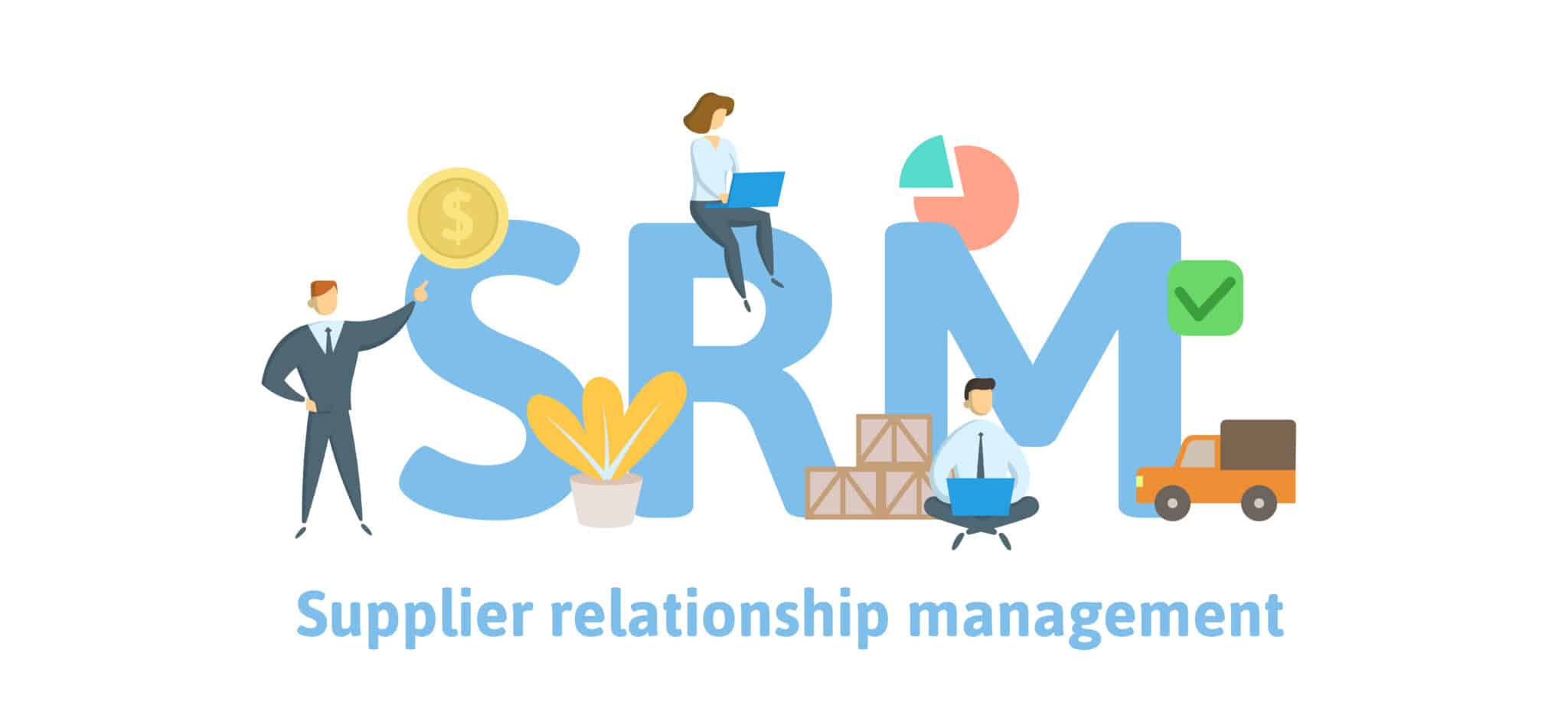The procurement sector is constantly changing. Once only concerned with spending control and cost reduction, it now also oversees regulatory compliance, CSR conformity and risk management. One key to success is effectively managing vendor relations, from the selection process to closing out a contract. This is called supplier relationship management, or SRM.
What does SRM look like on the ground, and how is it changing the purchasing function? Read on to find out.
I. SRM defined
SRM stands for supplier relationship management. It’s based on two key objectives:
- Set up actions and methods to optimize the supplier relationship
- Use a digital tool to perform and track these actions. It works the same way as the sales department’s CRM system (customer relationship management).
SRM software makes purchasing departments more operationally efficient by helping them to:
- Track spending by supplier and family
- Centralize supplier data in a single repository
- Manage supplier relations
- Onboard new suppliers
- Assess supplier performance and risks
- Simplify collaboration with suppliers and internal customers.
II. SRM software functionalities
Functionalities vary from one software developer to another. But all solutions basically offer these four functionalities:
- A supplier record This record contains all of the data and documents in the relationship history like contact details, ranking and certifications. There are records for tier-1 suppliers and subcontractors alike.
- A portal for sharing information and documents with suppliers This is a key feature while onboarding as well as throughout the relationship, notably to share legal documents that must be updated as part of the mandated duty of care.
- Vendor assessment tools These can include questionnaires, feedback from internal customers and ratings from external data providers like Altares and Ecovadis.
Buyer-support functionalities Features like risk-level alerts, dispute monitoring, progress plans and site visit reports help buyers select providers and manage the supplier relationship.
Supplier review and Scope 3 carbon emissions analysis
Since January 2023, companies with more than 500 employees have been required to include Scope 3 in their regulatory greenhouse gas emissions report. This additional criterion must be considered when assessing and choosing suppliers.
III. SRM software improves supplier knowledge
Purchasing departments see SRM software as a valuable asset because it creates a centralized repository! Since all stakeholders can access SRM in real time, buyers, internal customers and suppliers view the same information.
This offers two advantages. The data is centralized and retained throughout the supplier’s lifecycle. Plus, your buyers and internal customers enhance that data over time. In fact, they become part of the management process as soon as a supplier is selected.
This in-depth supplier knowledge helps:
- choose suppliers,
- predict and minimize the financial and legal risks of duty of care, and
- simplify supplier performance reviews.
There are so many benefits that improve supplier relationship management.
IV. How SRM streamlines purchasing
SRMs give the purchasing department real-time access to a 360° view of everything from financial data, calls for tenders and order history to contracts, performance reviews and compliance audits. This saves a lot of time because:
- negotiations are more effective,
- the decision-making process is more seamless, and
- the operational agility is unmatched when onboarding a new buyer or changing purchasing families.
V. The five criteria for choosing an SRM
Whichever SRM you choose, make sure it includes:
- Functional coverage that meets your needs and expectations
- True usability and a simple user interface
- Adaptive capabilities and genuine scalability
- Interoperability with the other programs on your information system (ERP, MRP, etc.) and data providers (Dun & Bradstreet, Ecovadis, etc.)
- Total cost of ownership (TCO) that fits your budget.
In addition to the tool itself, you also need the right partner to help you deploy the solution, from reviewing the purchasing process to integration and guidance during the transition. The good news is that Fluxym is here to help!
SRMs give purchasing departments total control over supplier knowledge. In most cases, they serve as a foundation for deploying other S2P solutions like sourcing, contracts and e-procurement so you can manage the entire supplier lifecycle. Last but not least, when your SRM makes buyers more operationally efficient, they have more time to devote to the supplier relationship. Faster onboarding and better communication can only make your strategic vendors more loyal!
Wondering if you need SRM software?
We have seen a net improvement in supplier knowledge since deploying the SRM. Now we can choose the vendors that deliver the most value. By digitizing our processes with Ivalua, our buyers have more time to analyze spending and formulate strategies for each category!
Jean-François Henninger
Procurement Team Leader
Petroineos
